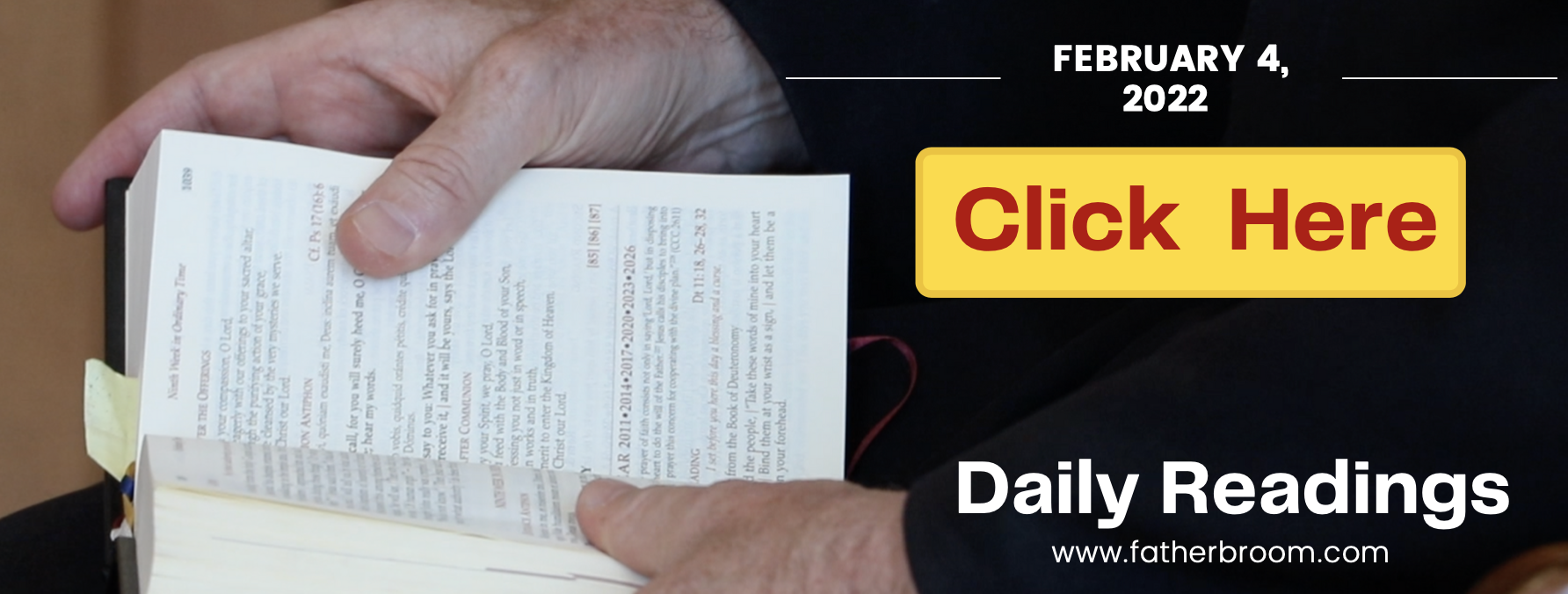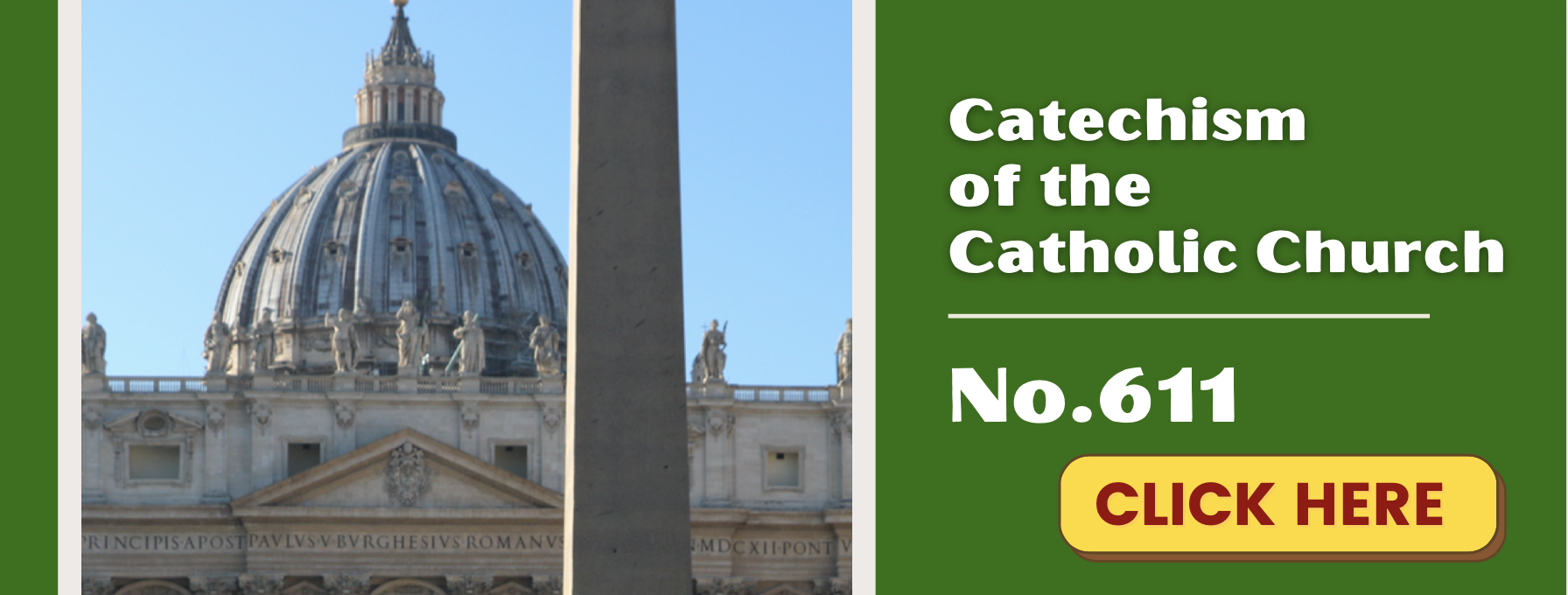Friday of the Fourth Week in Ordinary Time



“For greater things you were born.” (Ven. Mother Luisita)
FRIDAY, FEBRUARY 4th Mk 6:14-29 “He promptly dispatched an executioner with orders to bring back his head. He went off and beheaded him in the prison.”
- Upon the order of Herod, John the Baptist was beheaded for upholding the Truth, and through his martyrdom became Saint John the Baptist.
SANCTIFYING SUFFERING IN UNION WITH CHRIST
When confronted with the reality of suffering most of us cringe, recoil, or even run away from it. We want to flee to some special corner where we believe that we will be exempt from the reality of suffering. However, this is not possible. Whether we like it or not, suffering is an inevitable part of the human condition—our fallen condition as a result of Original Sin.
Confronted with this sober reality of suffering, we should come to terms with the reality that suffering will make us either “better or bitter”. Of all the world religions, Catholicism is the only religion that gives a positive and clear response to the stark reality of suffering. Suffering by its nature is neither good nor bad—it is neutral—rather it depends largely on how the individual interprets it and lives through it.
Means by Which We Can Sanctify Our Own Personal Suffering
Truly the only positive means by which we can sanctify our suffering is by uniting our suffering with the life and sufferings of Our Lord and Savior Jesus Christ! Jesus could have saved the world in many ways, but He chose to save the world by His Incarnation, life, teaching, miracles, but especially through the suffering that He willed to endure for all of us. This suffering of Jesus was most clearly manifest on Good Friday when He was condemned to death, carried His cross, was crucified and hung for three long hours on the cross for our salvation. He also taught us the meaning of suffering and the way to suffer by His own suffering.
It is up to us not to waste our suffering by complaining and running away from the suffering. Rather, it is up to us to unite our suffering to the sufferings of Our Lord and Savior Jesus Christ, especially in His most sorrowful passion.
1. Recognize Our Suffering in its Various Shapes and Forms
It is incumbent upon us to recognize the various kinds of sufferings that God may send us. Also, it is key to recognize that many of the sufferings that we undergo are sent by God, as we read in the Book of Job who was afflicted by many shapes and forms of suffering.
What might be the different forms of suffering? Indeed, there are many! Physical suffering is the most obvious. Our body suffers in one form or another: headache, toothache, back pain, heart attack, operations and recovery, etc.
Social suffering—the society and its environs cause us to suffer. The society and culture seem to be distancing themselves from God and all morality; due to this we suffer.
Family suffering—a family member, possibly very close to us, has made wrong decisions and is following a wrong path. We would like to direct them on the right path, but they refuse to listen. We suffer!
Emotional suffering—fears, worries, anxieties, sorrows, uncertainties about the future, sadness due to many circumstances. This interior state causes us great suffering!
Spiritual suffering—despite my good efforts, it seems is if God is distant, that He does not recognize me or really care for me. Saint Mother Teresa of Calcutta spent more than 40 years in this state of spiritual darkness! The mystics call this The Dark Night of the soul.
All of the above are various ways in which we are prone to suffer. We may suffer in one or more of the ways listed above or in even more ways than the ones listed. Now the key element is to be aware of our suffering in these various areas and then unite our sufferings to the Lord Jesus Christ in His sufferings. By means of this union with Christ, we sanctify ourselves, we sanctify our family, we sanctify the Church—the Mystical Body of Christ, and we sanctify the world at large. For this reason, St. Therese of Lisieux, known as “The Little Flower”, asserted: “When we do evil the whole world is lowered; when we do good we lift the whole world closer to heaven.”
2. Union With Christ’s Passion, Death and Resurrection in Holy Mass
Let us take one more huge step in understanding our union with the Passion, suffering, and death of Our Lord and Savior Jesus Christ. Indeed, Jesus died more than 2000 years ago. However, He promised us union with His passion, death and resurrection in Holy Mass!
He promised: “I will be with you always, even until the end of time.” (Mt 28:20) Where is He? In His Church which has as one of its most glorious titles—The Mystical Body of Christ. Most especially, Jesus is present in the Holy Sacrifice of the Mass. Every time an ordained priest celebrates and offers Holy Mass, Jesus is truly present in the moment of consecration under the appearance of bread and wine. Jesus becomes the spotless Victim, the Lamb of God and Savior of the world in Mass. What happened on Mount Calvary more than 2000 years ago, right now becomes once again present. Jesus in the Mass offers Himself—His Body, Blood Soul and Divinity—to the eternal Father for our salvation.
3. The Key that Opens Up the Reservoir of Graces in Our Suffering
Now the key to raining down a deluge of graces on ourselves in our suffering is the following: uniting our personal sufferings to Jesus, the Victim in the Holy Sacrifice of the Mass. In other words, place your headache or more serious physical ailment, conflict with your husband or wife, your emotional disturbances, your own dark night, on the paten in the Mass. Then when the priest, who represents Christ, consecrates the host and the wine in the Chalice into the Body and Blood of Christ, your sufferings are elevated on high for your sanctification, as well as for the sanctification of all those for whom you pray, and for the whole world!
4. One More Step to Make Our Sufferings More Efficacious
Still another step is essential to make our sufferings all the more efficacious. It is this: reception of Holy Communion. It is important to participate in Mass and the consecration; however, it is much more complete if we receive the fruit of consecration which is Holy Communion—the Body, Blood Soul, and Divinity of Jesus, our Lord and Savior.
Upon receiving Jesus with faith, fervor, love and devotion our sufferings are sanctified to the max, and even more, Jesus gives us the grace, the peace, and the strength to carry our cross, and He will even alleviate the pain. Listen to His most consoling words: “Come to me, all you who labor and are burdened and I will give you rest. Take my yoke upon you and learn from me, for I am meek and humble of heart; and you will find rest for your souls. For my yoke is easy and my burden is light.” (Mt 11: 28-30)
5. Start Now: Sanctify Your Daily Crosses and Sufferings
So why not start now. Remember those key words: OFFER IT UP. Pray your morning offering and give all to the Hearts of Jesus and Mary. Then when visited by suffering—be it physical, moral, psychological, emotional, social, family, etc.—unite it to Jesus on the cross in the Holy Sacrifice of the Mass. Then your sufferings will take on infinite value because they are united with Jesus’ own sufferings, and Jesus is both man and God!
May Our Lady who suffered beneath the cross, Our Lady of Sorrows, attain for us the grace not to waste our sufferings, but to sanctify them by uniting our own sufferings with the Passion, death and Resurrection of Our Lord and Savior, Jesus Christ—for our salvation and the salvation of many others!